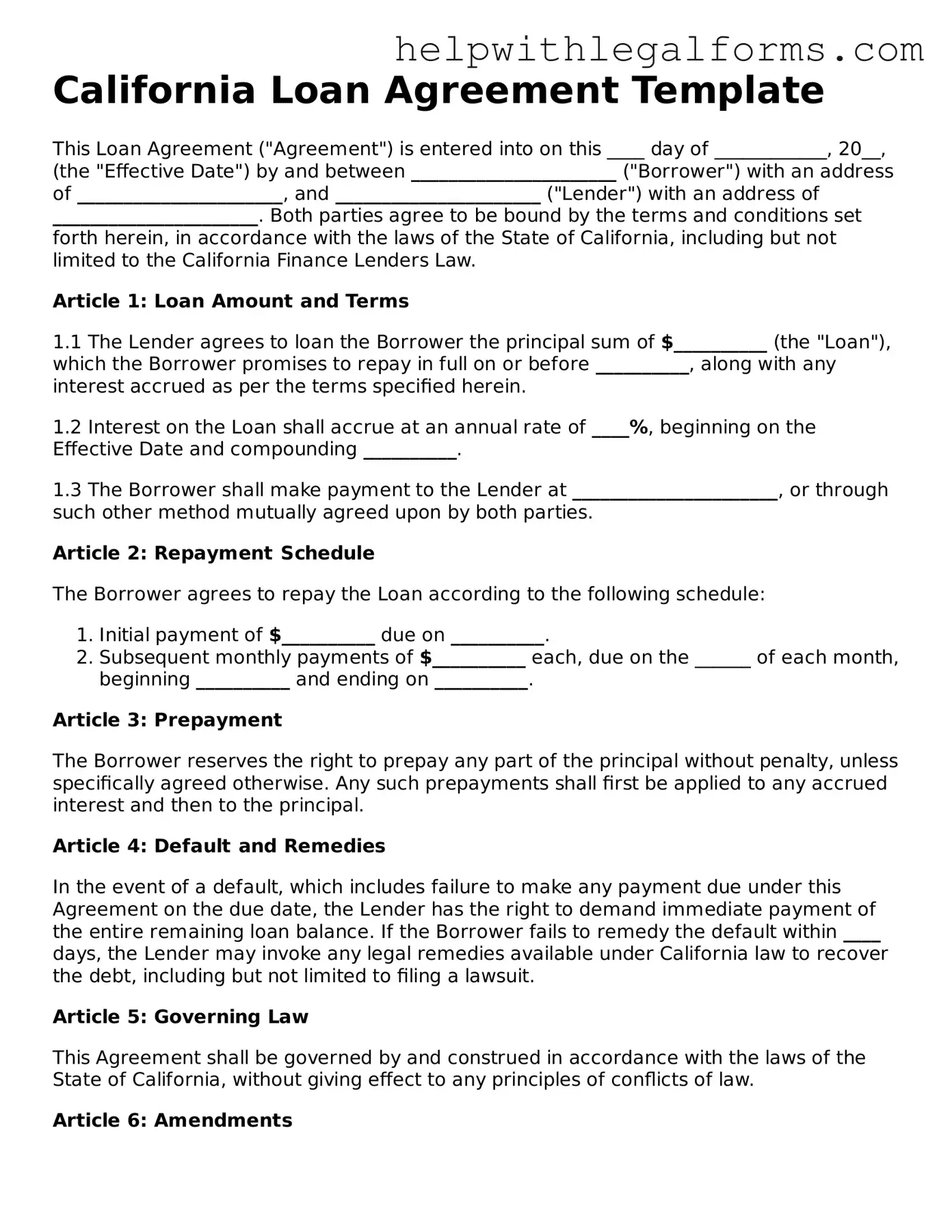California Loan Agreement Template
This Loan Agreement ("Agreement") is entered into on this ____ day of ____________, 20__, (the "Effective Date") by and between ______________________ ("Borrower") with an address of ______________________, and ______________________ ("Lender") with an address of ______________________. Both parties agree to be bound by the terms and conditions set forth herein, in accordance with the laws of the State of California, including but not limited to the California Finance Lenders Law.
Article 1: Loan Amount and Terms
1.1 The Lender agrees to loan the Borrower the principal sum of $__________ (the "Loan"), which the Borrower promises to repay in full on or before __________, along with any interest accrued as per the terms specified herein.
1.2 Interest on the Loan shall accrue at an annual rate of ____%, beginning on the Effective Date and compounding __________.
1.3 The Borrower shall make payment to the Lender at ______________________, or through such other method mutually agreed upon by both parties.
Article 2: Repayment Schedule
The Borrower agrees to repay the Loan according to the following schedule:
- Initial payment of $__________ due on __________.
- Subsequent monthly payments of $__________ each, due on the ______ of each month, beginning __________ and ending on __________.
Article 3: Prepayment
The Borrower reserves the right to prepay any part of the principal without penalty, unless specifically agreed otherwise. Any such prepayments shall first be applied to any accrued interest and then to the principal.
Article 4: Default and Remedies
In the event of a default, which includes failure to make any payment due under this Agreement on the due date, the Lender has the right to demand immediate payment of the entire remaining loan balance. If the Borrower fails to remedy the default within ____ days, the Lender may invoke any legal remedies available under California law to recover the debt, including but not limited to filing a lawsuit.
Article 5: Governing Law
This Agreement shall be governed by and construed in accordance with the laws of the State of California, without giving effect to any principles of conflicts of law.
Article 6: Amendments
Any amendments or modifications to this Agreement must be made in writing and signed by both parties.
Article 7: Notices
All notices, requests, demands, and other communications under this Agreement shall be in writing and shall be deemed to have been duly given on the date of service if served personally on the party to whom notice is to be given, or on the third day after mailing if mailed to the party to whom notice is to be given, at the address specified above or as the parties may provide from time to time in writing.
IN WITNESS WHEREOF, the parties hereto have executed this Agreement as of the Effective Date first above written.
______________________
Lender Signature
______________________
Borrower Signature
______________________
Witness Signature (Optional)
